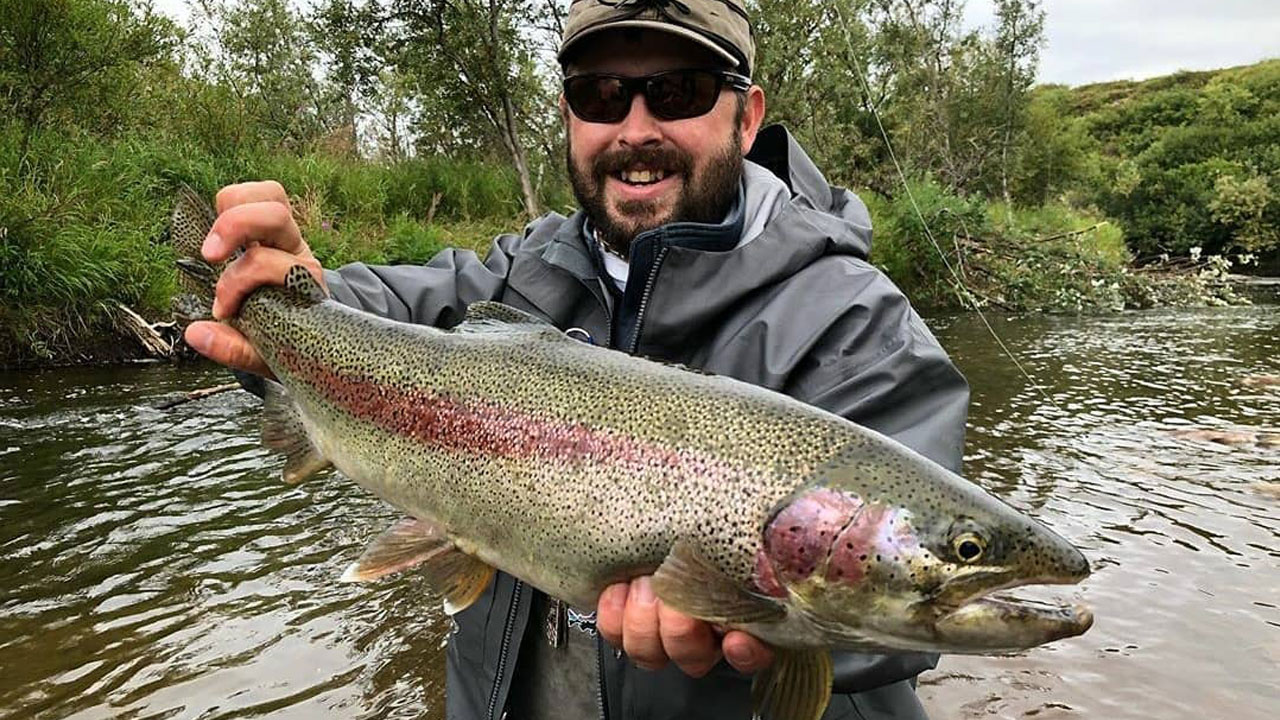Bristol Bay Trout Fishing
Bristol Bay trout fishing, compared to the Lower 48’s blue-ribbon streams, is simply a couple notches above. It is astounding—the number and quality of rainbow trout, Dolly Varden and Arctic char that exist in the Bristol Bay region.
In this video, James Johnson, head guide and owner at Katmai Trophy Lodge and Naknek River Camp on the Naknek River, discusses trout fishing opportunities in western Alaska. Specifically, he discusses small-stream fishing in the area, including some tips and tactics. James grew up at fishing lodges and has a wealth of knowledge few can fathom.
Bristol Bay trout vary. You have small rivers with large populations of leopard rainbows, larger rivers with smaller populations of gigantic lake-run rainbows, and everything in between. In the small streams, trout numbers are generally high, but truly large fish (by Alaska standards; lets say over 25”) can be hard to come by. But there are usually a few around. They tend to be a little spooky, and most anglers spook them before they get a chance to fish to them. A key tip for small streams is that if you want a chance to fish to the best the creek might have, you need to stay back, out of the water if possible. Then, start by fishing close, and work your casts farther out. Small Bristol Bay streams are generally clear, and if you use your eyes, stay back, and fish slowly, you just might have a crack at some of the bigger fish.
 James also talks a little about reading water. “The fish don’t want to sit on the treadmill.” That means that generally, the fish aren’t in the fastest water—some cover or structure is what will attract trout. 10% of the water contains 90% of the fish, and this applies to Bristol Bay trout in streams large and small.
James also talks a little about reading water. “The fish don’t want to sit on the treadmill.” That means that generally, the fish aren’t in the fastest water—some cover or structure is what will attract trout. 10% of the water contains 90% of the fish, and this applies to Bristol Bay trout in streams large and small.
Bristol Bay fishing is something every serious fly anglers should experience. Since there are so many different streams in the area, perhaps several trips are in order. With very low angling pressure last year, the trout fisheries should be especially healthy this year. With the pandemic on the downhill slide, and especially robust fish populations, this is the year to go!

